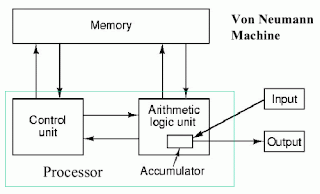This section covers the most common RAM machine computers.In most cases, computer instructions are simple: add one number to another, move some data from one place to another, you can send a message to a external device, etc. These instructions are read from computer memory, usually (executed) in the order they were given. But there are usually specialized instructions to tell the computer to move forward or back to another place in the program and continue execution from there. They are called "Jump" instructions (or branches).
In addition, branch instructions can be done to obtain parole for the different sequences of instructions that can be used depending on the outcome of a previous calculation or some external event. Many computers directly support subroutines by providing a type of jump that "remembers" the place and went to another instruction to return to the instruction following the jump instruction.
Program execution can be likened to reading a book. Even if a person will normally read each word and line in sequence, sometimes you can return to a previous location in the text or skip sections that are not of interest. Similarly, a computer may sometimes go back and repeat the instructions in some section of the program, over and over again until an internal condition is met. This is known as the flow of control within the program and this allows the computer to perform tasks repeatedly without human intervention.
In comparison, a person with a pocket calculator can perform basic arithmetic, such as adding two numbers with a few button presses. But by adding the numbers 1 to 1000 would take thousands of button presses and a lot of time with a near certainty of making a mistake. On the other hand, a computer can be programmed to do this with just a few simple instructions.




0 comments:
Post a Comment